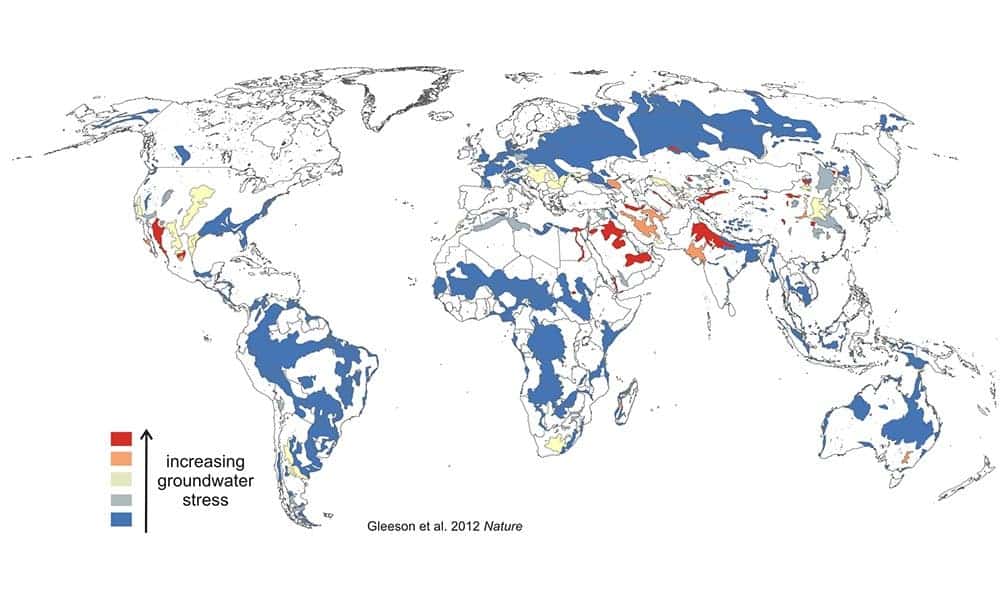Groundwater use is unsustainable in many of the world’s major agricultural zones; as a matter of fact, about a quarter of the world’s population lives in regions where groundwater is being used up faster than it can be replenished, concluded researchers.
The planet thirsts
Our entire civilization depends on our water supply, and aside from agriculture, pretty much all industrial processes require vast quantities of water – water that has been stored up to thousands of years in various aquifers. Aquifers are underground layer of water-bearing permeable rock or unconsolidated materials from which groundwater can be extracted with wells. Some aquifers are absolutely massive, stretching across several countries and providing agricultura, industrial and drinking water for millions and millions of people. However, in most of the world’s major agricultural areas, including the Central Valley in California, the Nile delta region of Egypt, and the Upper Ganges in India and Pakistan, the demand is larger than the supply.
“This overuse can lead to decreased groundwater availability for both drinking water and growing food,” says Tom Gleeson, a hydrogeologist at McGill University in Montreal, Quebec, and lead author of the study. Eventually, he adds, it “can lead to dried up streams and ecological impacts”.
Overexploatation
It’s not that the planet doesn’t have enough water – the truth is that we’re using it recklessly. Gleeson and his colleagues combined a global hydrological model and a date set of groundwater use to estimate how much water is extracted by countries throughout the world. They also analyzed another important factor: the aquifers’ rate of recharge – the speed at which groundwater is replenished. Using this approach, they managed to calculate the groundwater ‘footprint’ for nearly 800 aquifers worldwide; and the importance of this study is huge.
“To my knowledge, this is the first water-stress index that actually accounts for preserving the health of the environment,” says Jay Famiglietti, a hydrologist at the University of California, Irvine, who was not involved in the study. “That’s a critical step.”
The authors found that some 20% of the world’s aquifers are being overexploited – some heavily so. For example, the the groundwater footprint for the Upper Ganges aquifer is more than 50 times the size of its aquifer, so the rate of extraction is highly unsustainable, Gleeson notes – a dramatic fact, considering how over 200 million rely on water from that aquifer.
The truth is dire, Gleeson estimates. He believes that a even more thorough study would find even more aquifers in dramatic, unsustainable situations. But, he also adds, there is still hope: as much as 99% of the fresh, unfrozen water on the planet is groundwater. “It’s this huge reservoir that we have the potential to manage sustainably,” he says. “If we choose to.”










